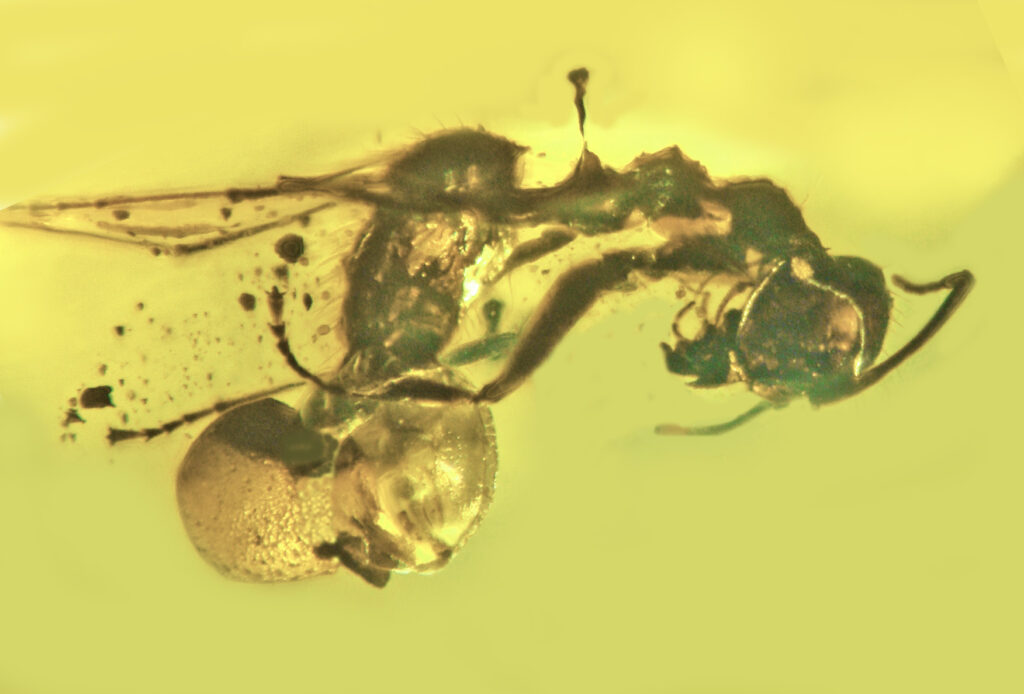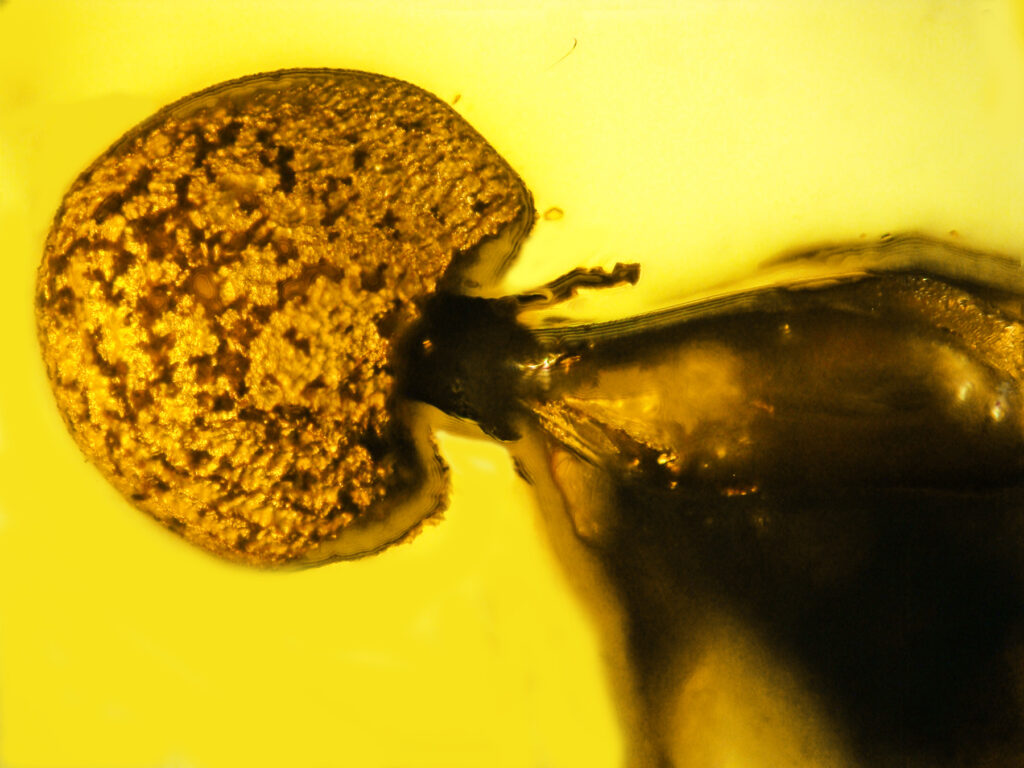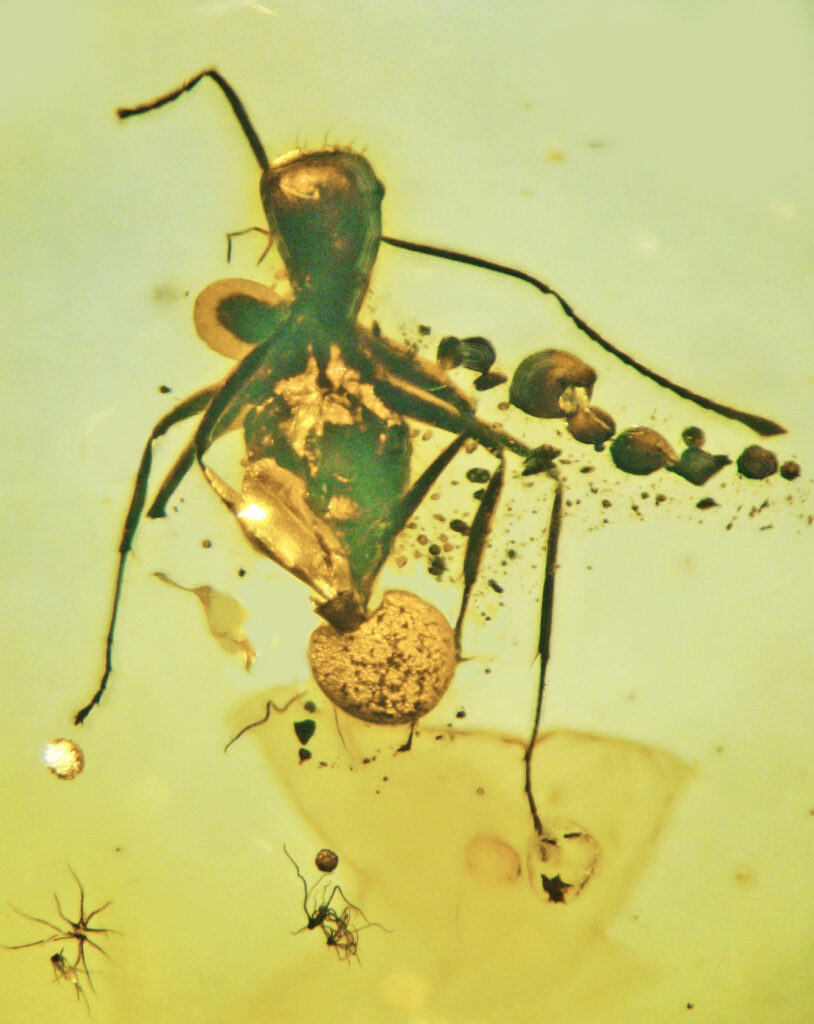It’s not everyday you hear about the discovery of a well preserved fossilized ant in amber. What’s even more incredible, is not only has one been found, but it also just so happens to have a mushroom growing out of it’s rear end.
All jokes aside, it’s actually quite the discovery, as researchers from Oregon State University stated that the 50 million year old ant has been “…identified as the oldest known specimen of a fungus parasitizing an ant, and the fossil also represents a new fungal genus and species.”

“It’s a mushroom growing out of a carpenter ant,” said OSU’s George Poinar Jr., an international expert in using plant and animal life forms preserved in amber to learn about the biology and ecology of the distant past.
A mushroom is the reproductive structure of many fungi, including the ones you find growing in your yard, and Poinar and a collaborator in France named their discovery Allocordyceps baltica. They found the new type of Ascomycota fungi in an ant preserved in 50-million-year-old amber from Europe’s Baltic region.

Poinar continues, “Ants are hosts to a number of intriguing parasites, some of which modify the insects’ behavior to benefit the parasites’ development and dispersion. Ants of the tribe Camponotini, commonly known as carpenter ants, seem especially susceptible to fungal pathogens of the genus Ophiocordyceps, including one species that compels infected ants to bite into various erect plant parts just before they die.”

“We can see a large, orange, cup-shaped ascoma with developing perithecia – flask-shaped structures that let the spores out – emerging from the rectum of the ant,” Poinar said. “The vegetative part of the fungus is coming out of the abdomen and the base of the neck. We see freestanding fungal bodies also bearing what look like perithecia, and in addition we see what look like the sacs where spores develop. All of the stages, those attached to the ant and the freestanding ones, are of the same species.”
“There is no doubt that Allocordyceps represents a fungal infection of a Camponotus ant,” he said. “This is the first fossil record of a member of the Hypocreales order emerging from the body of an ant. And as the earliest fossil record of fungal parasitism of ants, it can be used in future studies as a reference point regarding the origin of the fungus-ant association.”
The source of this story and the images are from Oregon State University. The findings of this discovery were published in Fungal Biology.

